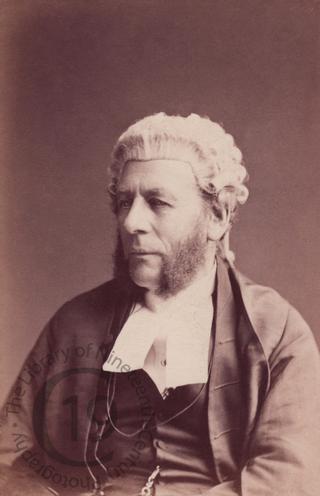
Serjeant Ballantine
A carte-de-visite portrait of the legendary cross-examiner William Ballantine (1812-1887), who held the position of a Serjeant-at-law until it was abolished by the legal reforms of the 1870s.
Born in Howland Street, off London’s Tottenham Court Road, Ballantine was the son of a police-magistrate and was educated at St Paul's School. Called to the Bar in 1834, he joined the Criminal Court and travelled the judicial 'Home Circuit', which necessitated him attending courts in Hertfordshire, Kent, Surrey, Sussex and Essex. As a young man he had a wide familiarity with dramatic and literary society, meeting many writers, including Charles Dickens, William Makepeace Thackeray and Anthony Trollope, and this background helped to obtain for him a large legal practice, particularly in criminal cases. In the late 1840s, Ballantine became known as a formidable cross-examiner, having become involved in several famous cases, where he was able to display these skills.
In 1856 Ballantine became a Serjeant-at-law, being then entitled to wear the white coif or cap of that rank. He was one of the last Serjeants in the courts, that title and position being abolished in the judicial reforms of 1873. During the 1860s, he took on a number of high-profile cases, culminating in the sensational Mordaunt divorce trial of 1870. However, Ballantine lost the case because he declined to cross-examine the Prince of Wales, who many believed had committed perjury, and thus failed to convince the jury that Lady Mordaunt was guilty of adultery.
In the early 1880s, Ballantine retired from the Law in order to write and travel, publishing several volumes of reminiscences. His interest in the theatre and journalism made him a familiar sight around London. He died at Margate in 1887, at the age of 75. Ballantine’s private life was considered ‘bohemian’ and though he had earned large sums, he died poor.
Photographed by the London Stereoscopic and Photographic Company.
Code: 125363




